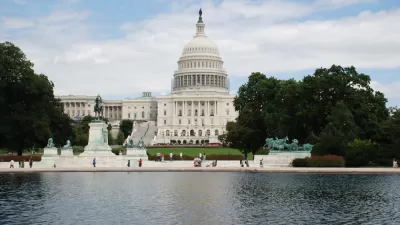As cities and counties move forward with smoke-free housing laws, a different public health concern often gets lost in the shuffle: how to make sure these new laws don’t put low-income residents at risk of losing their homes.
When it comes to protecting people from secondhand smoke, we’ve reached what some are calling the final frontier – laws restricting smoking in apartments, condos, and other multi-unit housing.
But as more and more cities and counties move forward with smoke-free housing laws, Anne Pearson says another major public health concern often gets lost in the shuffle: how to make sure these new laws don’t put low-income residents at risk of losing their homes.
"Smoke-free housing laws should protect tenants not only from secondhand smoke but also from housing insecurity," she writes. The policies "shouldn't provide a fast track to eviction."
How can cities and counties be sure smoke-free housing policies take into consideration the potential health consequences for low-income residents who smoke?
Pearson offers several recommendations, including getting tenants' rights groups involved in the policymaking process, incorporating a gradual phase-in period for a new smoke-free housing policy, and providing access to support to help tenants quit smoking.
"Smoke-free housing policies are a powerful way to protect people from the hazards of secondhand smoke," Pearson writes. "But it’s important to keep in mind the health consequences for people who will face challenges complying. Smoke-free housing policies should be strong, but they should also be humane."
FULL STORY: Making Smoke-free Housing Laws Strong – but Humane

Study: Maui’s Plan to Convert Vacation Rentals to Long-Term Housing Could Cause Nearly $1 Billion Economic Loss
The plan would reduce visitor accommodation by 25,% resulting in 1,900 jobs lost.

North Texas Transit Leaders Tout Benefits of TOD for Growing Region
At a summit focused on transit-oriented development, policymakers discussed how North Texas’ expanded light rail system can serve as a tool for economic growth.

Why Should We Subsidize Public Transportation?
Many public transit agencies face financial stress due to rising costs, declining fare revenue, and declining subsidies. Transit advocates must provide a strong business case for increasing public transit funding.

How to Make US Trains Faster
Changes to boarding platforms and a switch to electric trains could improve U.S. passenger rail service without the added cost of high-speed rail.

Columbia’s Revitalized ‘Loop’ Is a Hub for Local Entrepreneurs
A focus on small businesses is helping a commercial corridor in Columbia, Missouri thrive.

Invasive Insect Threatens Minnesota’s Ash Forests
The Emerald Ash Borer is a rapidly spreading invasive pest threatening Minnesota’s ash trees, and homeowners are encouraged to plant diverse replacement species, avoid moving ash firewood, and monitor for signs of infestation.
Urban Design for Planners 1: Software Tools
This six-course series explores essential urban design concepts using open source software and equips planners with the tools they need to participate fully in the urban design process.
Planning for Universal Design
Learn the tools for implementing Universal Design in planning regulations.
City of Santa Clarita
Ascent Environmental
Institute for Housing and Urban Development Studies (IHS)
City of Grandview
Harvard GSD Executive Education
Toledo-Lucas County Plan Commissions
Salt Lake City
NYU Wagner Graduate School of Public Service





























